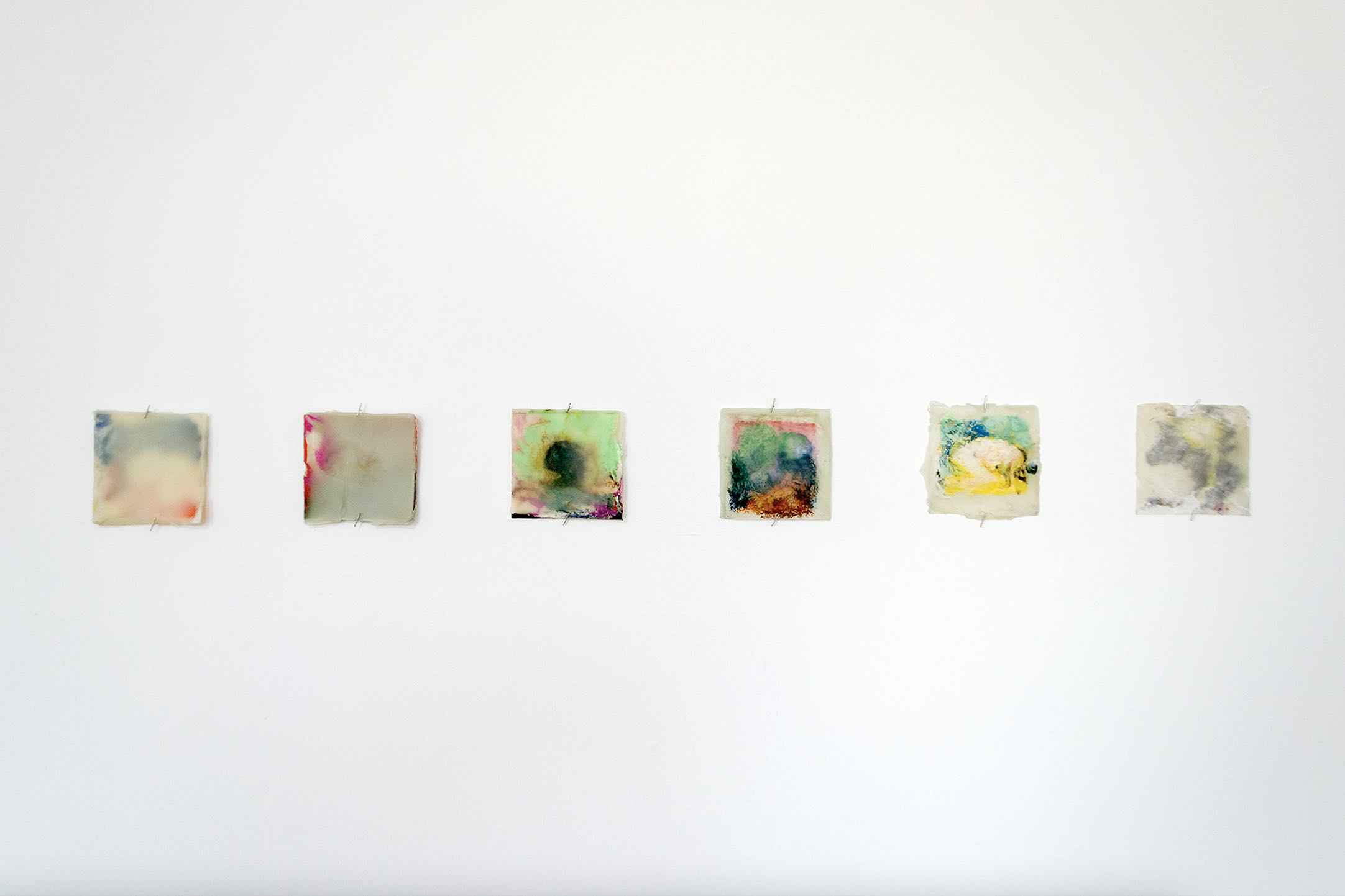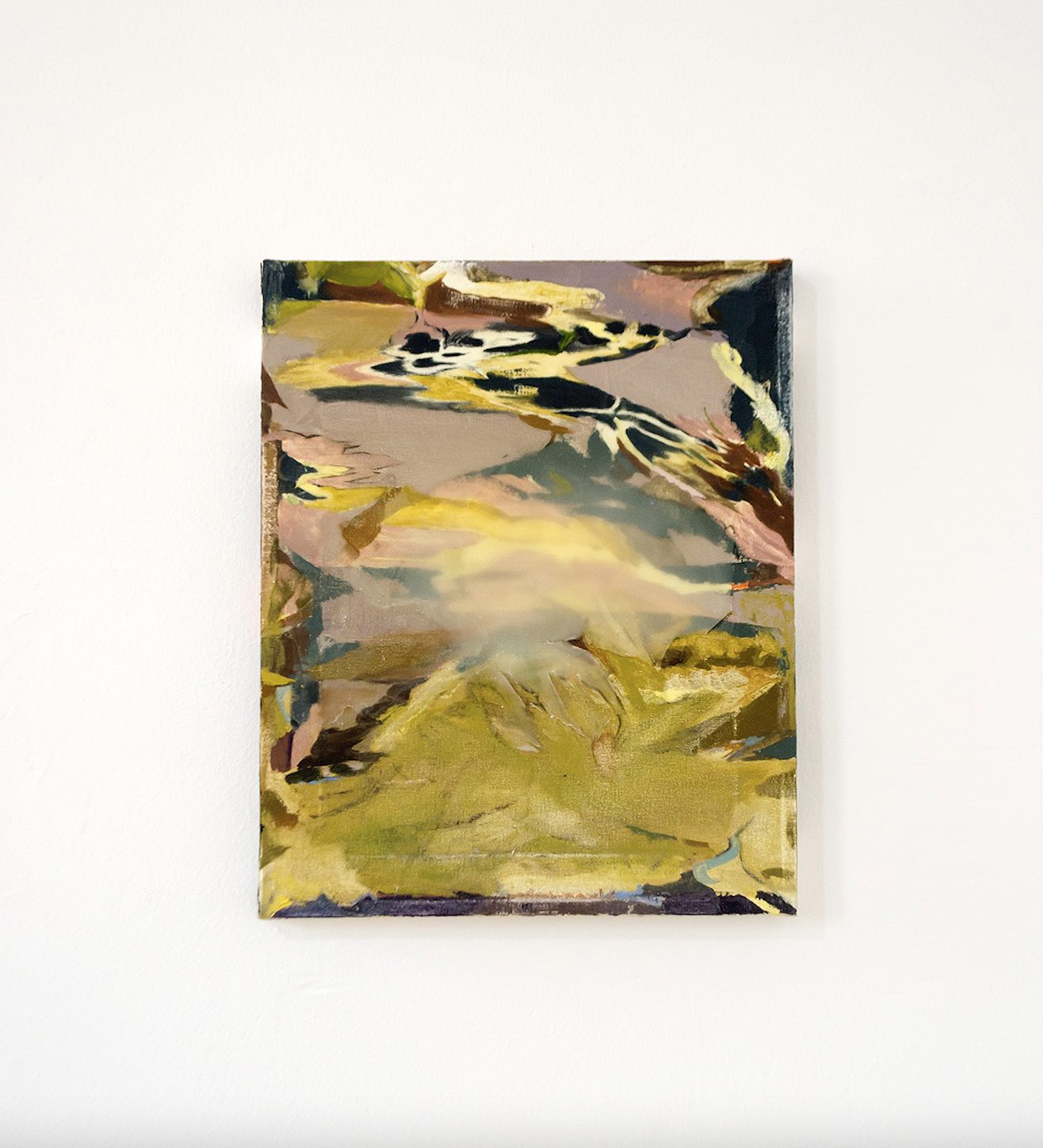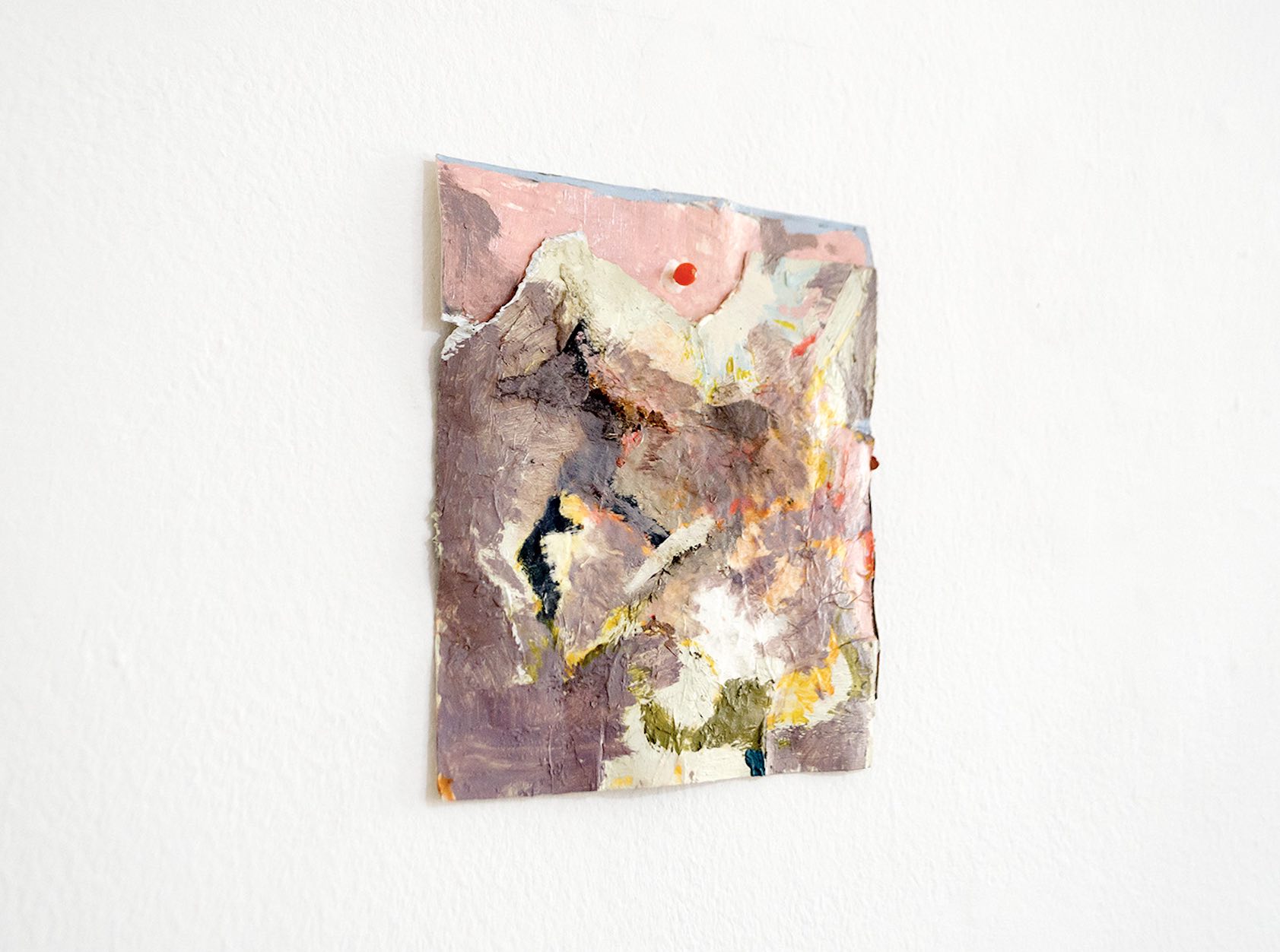
Essay
'Como renuncia a ser una flor lo que es hierba' (How What’s Grass Renounces Being a Flower) by Mariana Paniagua
by Roberto Carrillo
At Nixxxon
Reading time
5 min
How many paintings survive a painting, and in a painting? What a mystery—those paintings that often are just a ruin of others, a cemetery, and a pantheon: gods and corpses gathered together, light and shadows, steles of cold minerals and cold humors.
When I witness the work of Mariana Paniagua, I feel myself faced with a mystery that I don’t want to solve: a labyrinth of thoughts and sensations wraps around me, nourishes me, suspends me. Something happens there between an inside and an outside, clearly breaking down those divisions between what is one and what is another.
Landscape. I am called up by a tension; not only are inside and outside indistinct, but also infra and supra. The drowned skies and the earth flying tenderly over the gaze. There’s a fragment of Joyce’s Ulysses that for me has to do with painting…and also with landscape. “Born all in the dark wormy earth, cold specks of fire, evil, lights shining in the darkness”—although Joyce is referring to gemstones, I think this works just as well for pigments: there’s a type of painting whose roots are in the earth (cold, wet, and dark) rather than in the warm, dry, light affecting our eyes.
There’s a notion of landscape conceived as an effect of light: these landscapes have much to do with horizontality and vitality, the upright body and the use of hands for work. But I’m interested in another type of landscape, one that comes from the earth, one that infiltrates organically, one in which bacteria, skin, and nerves mix together in order to inhabit a look between or with darkness. A way of looking while touching, of being part of the landscape, of being a landscape-body in which work is the earth’s resistance and subsistence, in which night and depth cast us into the immediate, into the thrust of things and into their death as well. Disappearance.

I feel that Paniagua’s landscapes come from that imagination of disappearance, but not from those who look while no longer seeing anything, but rather from those who touch and forget a little with each touch; an intuition of what follows is a guide for remembering the forgotten. Hence the need to touch the same thing several times—the transience of the textural.
Paniagua’s painting comes and goes; it’s a sort of accumulation and dispossession, small gestures occurring, inhabiting, transforming. One has the feeling that there’s nothing left over, of contemplating specters, presences of absences: something happens there in the absence—what is it that’s absent? One might think that it’s painting: that is, the color itself, the material, the wax or oil, the saturation of the pigment, its use. But we might also think that other paintings are absent—their vast genealogy—but no, they haven’t completely left, their history doesn’t escape, nor is their materiality a kind of trace. An imprint of other paintings is what moves us, as though we inhabited an old body, impure possession, sharing desires, looks, flows while at the same time stripping them away.
Paintings that are born flayed, as though we could remove skin from the landscape, as though we could remove skin in the landscape, merge with it, and—at the same time—return to this texture. Warps (for hiding and for showing) configure a being there, with an exorbitant gaze, observing the skies or perhaps the earth—which are probably the same—looking for a transparency between the grains of sand and the spawn of the sea.
There’s something of a portal in Paniagua’s work, a mysterious threshold that turns everything upside down; however, there’s no pain, there’s no drama—it’s like the monk who immolates himself, who has also stripped himself of pain. The portal is rather like shapes, shapes without a figure, shapes that are born from the very resistance of the materials, from the ghosts of the paintings themselves: resistance to being the whole, resistance to being with the whole. What is forged is the fracture, the groove, the portal like a wound not yet healed, still without the body being willing to heal or to die. It’s at that moment that the wounded body bursts in, stripping us off.

I think of Paniagua’s painting as small wounds without pain, or rather with a little pain. Bodily rifts in a constellation, in a mobile of times in which heaven and earth playfully dangle. It’s what inhabits the stardust in the solid rocks of the mountain, the stinking gases from the center that disappear into the air. Just as the wax balm falls and sprouts, is born and dies, melts and separates from the landscape, so the body navigates in small wounds, between thresholds: as though each star were the possibility of a new drawing and as though each celestial body were a guide on earth.
A painting at risk, a few stains, a chromatic value, a bit of ochre, some burnt Prussian, half tones, a yellow point, the minimal gesture of a label, a block; a concert of decisions that become paint, shadows, and vestiges of other conversations, perhaps of some dreams, some puddles exploding from childhood, some laughter bursting from old faces. I think and I feel Mariana’s painting in the manner of a song, like the ballad of a fearful silence by Alberti: “Here, when the wind dies, words fade.”
Translated to English by Byron Davies
The exhibition is presented by Nixxxon and will be on view through April 30.
Published on April 21 2022